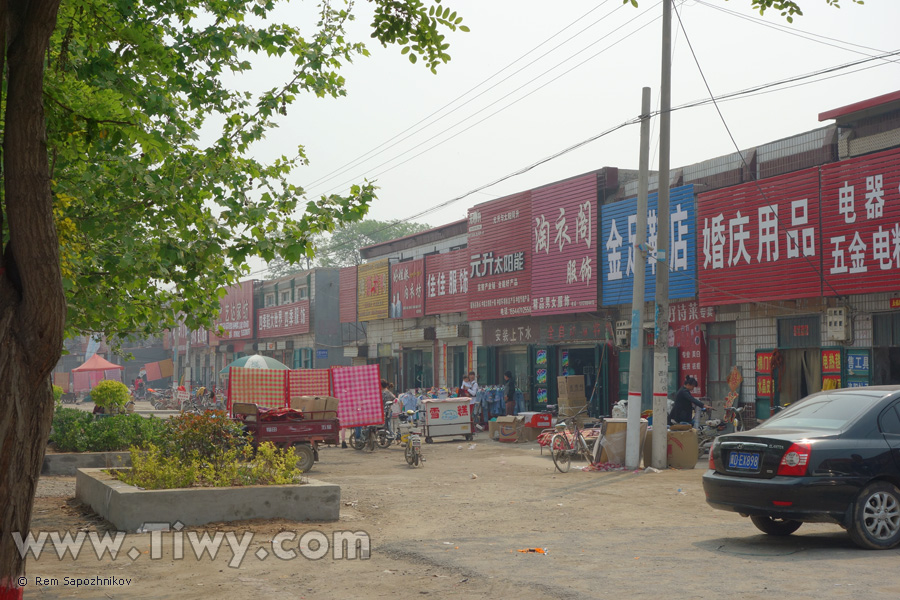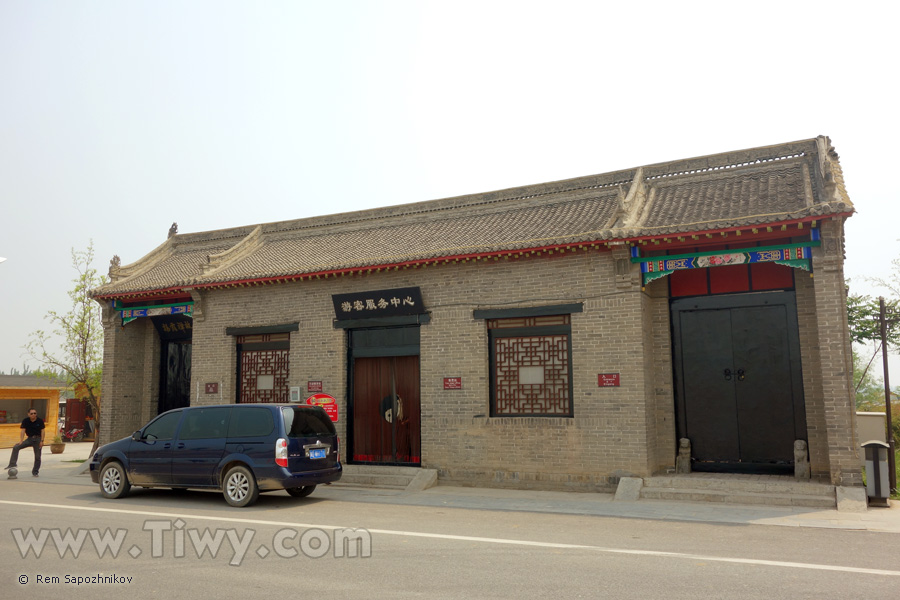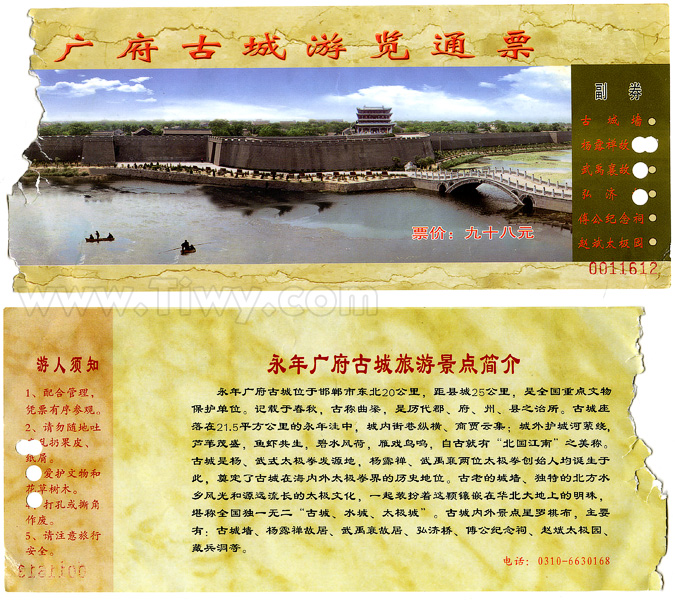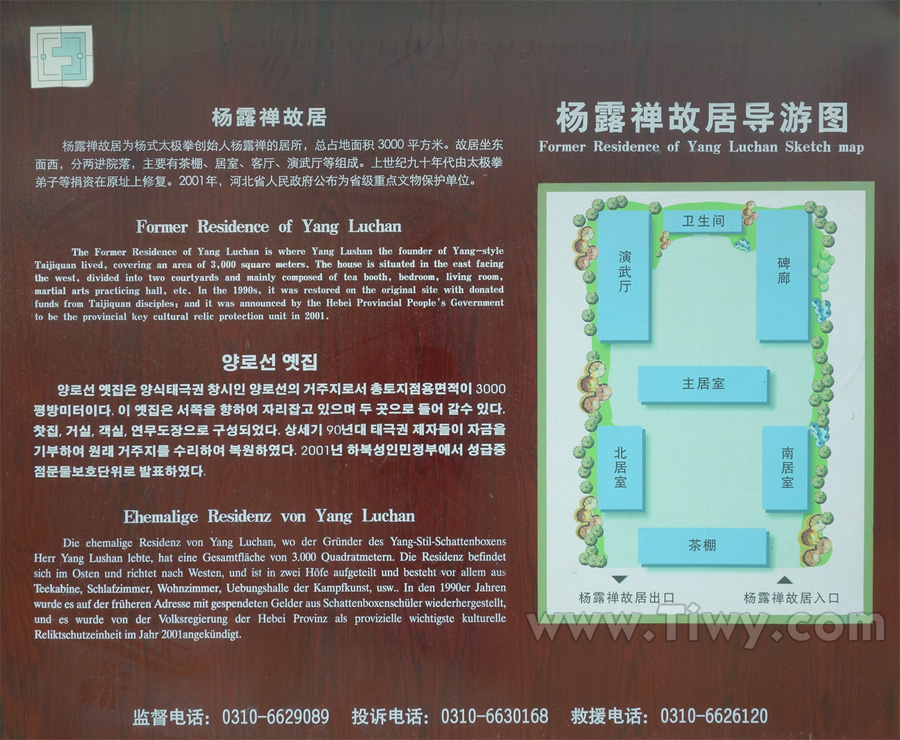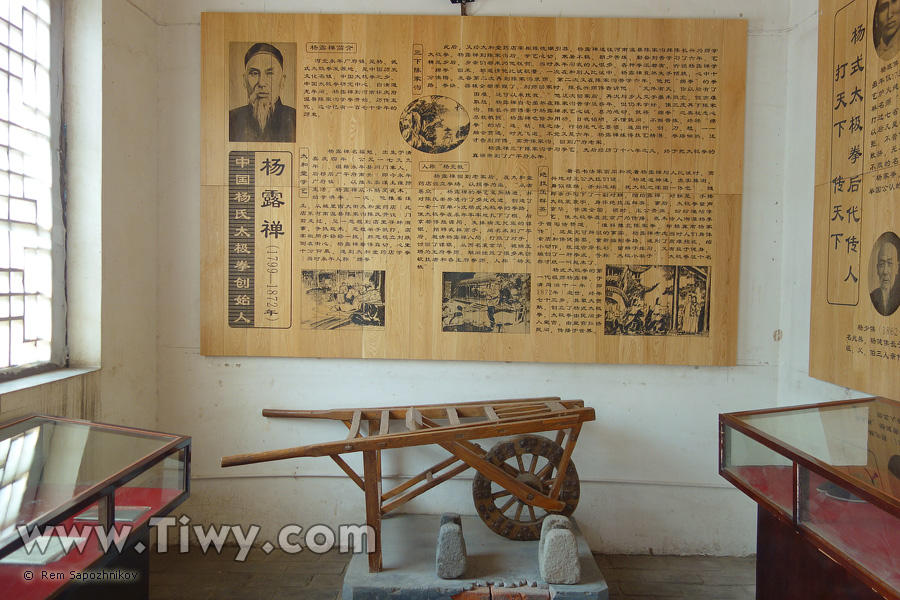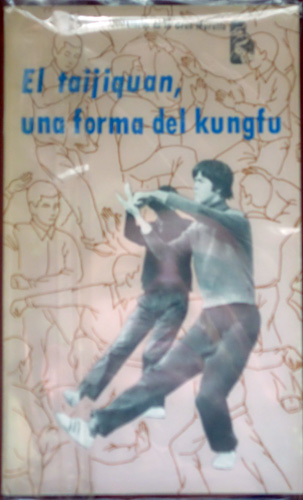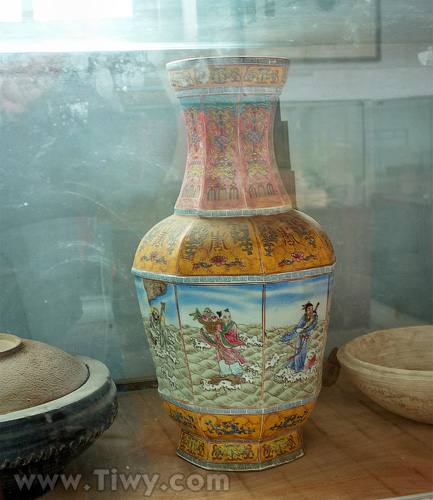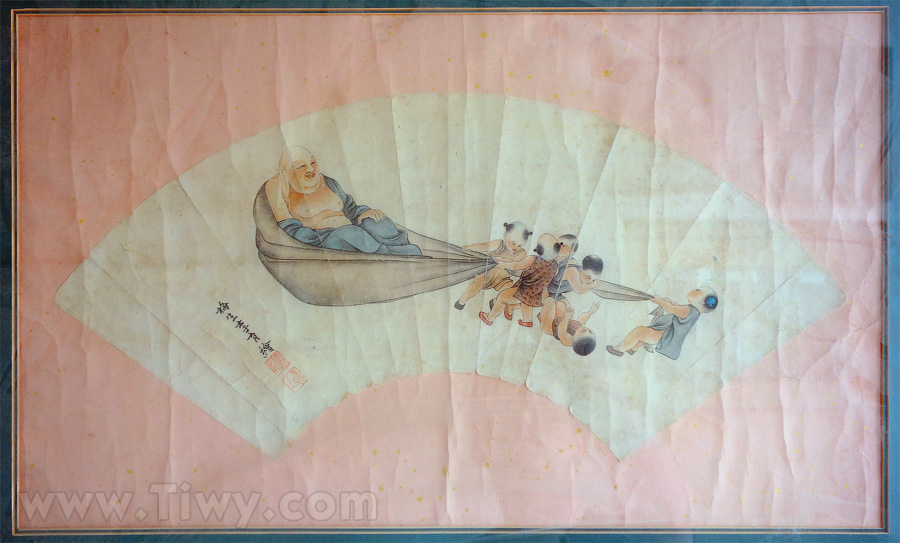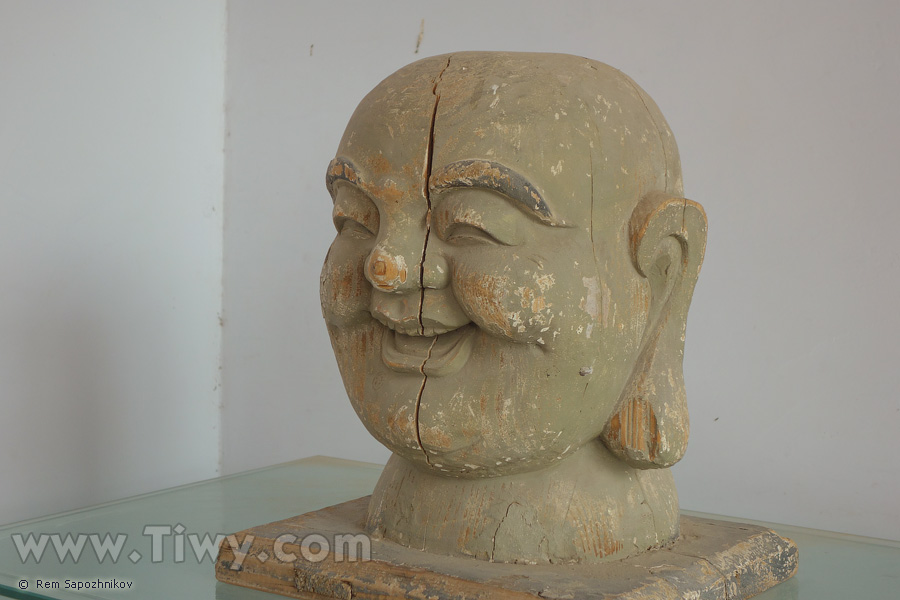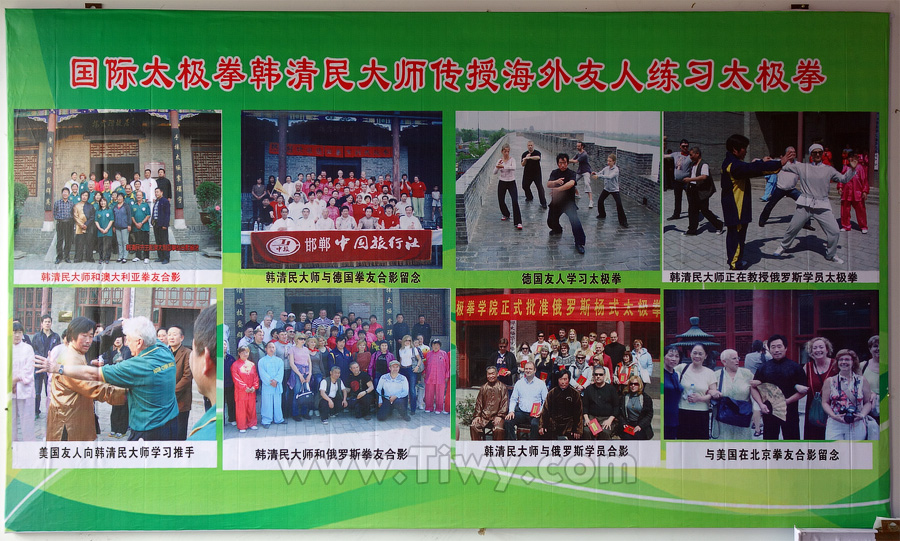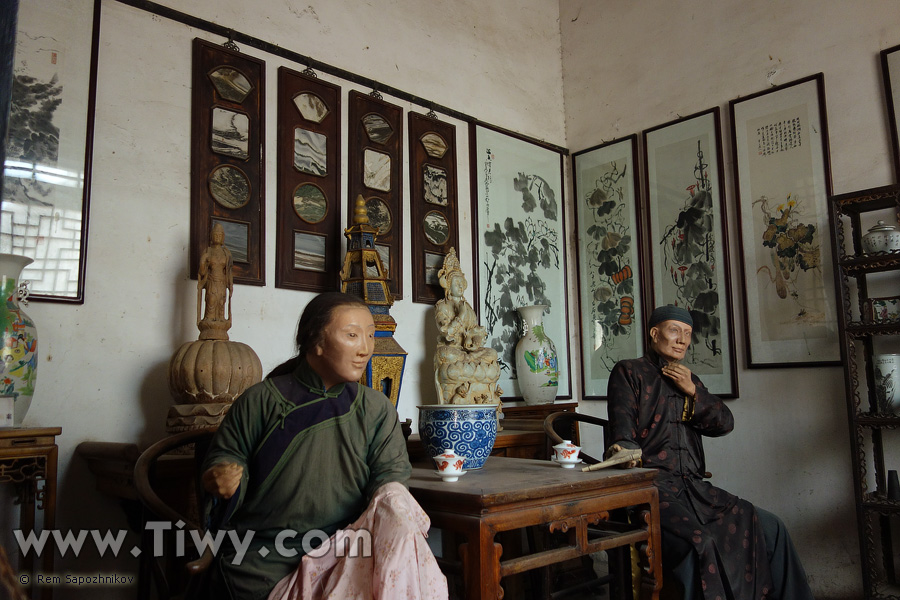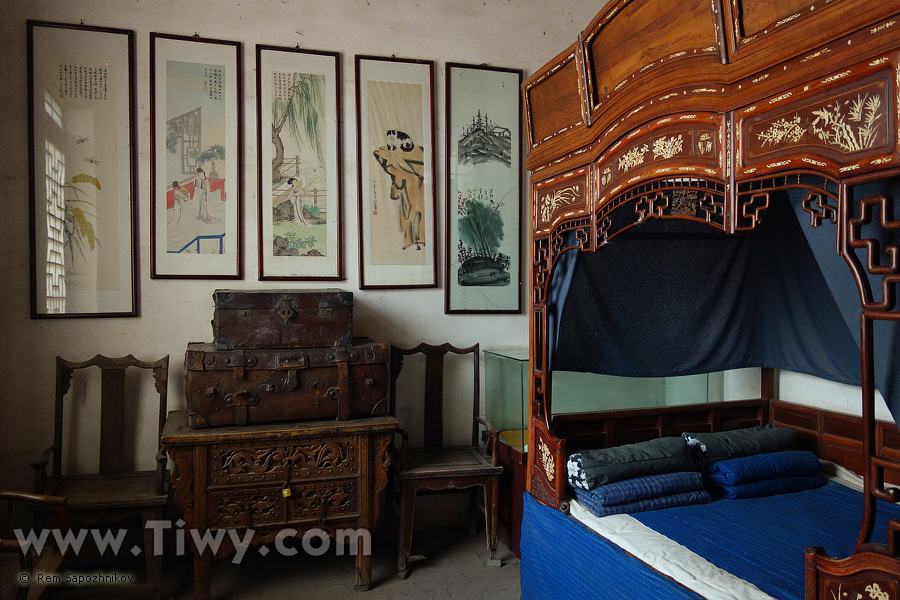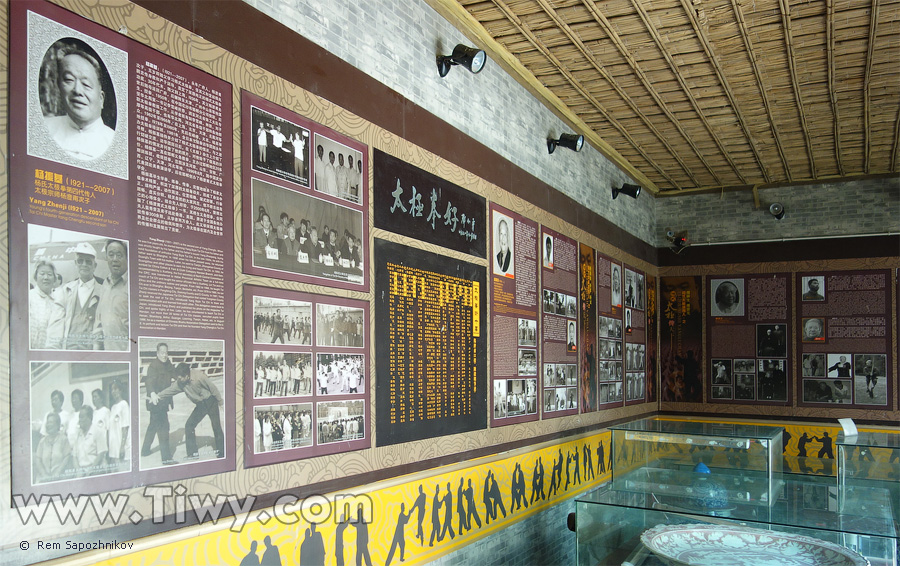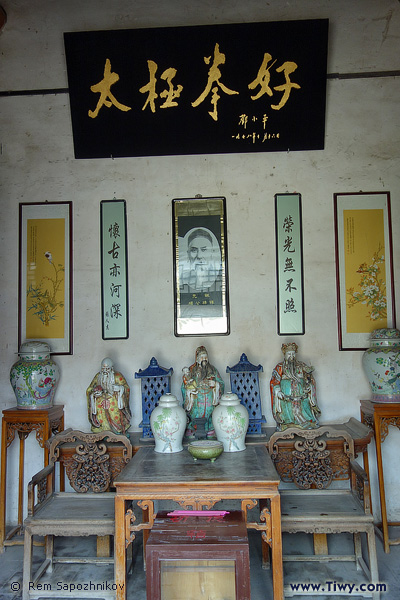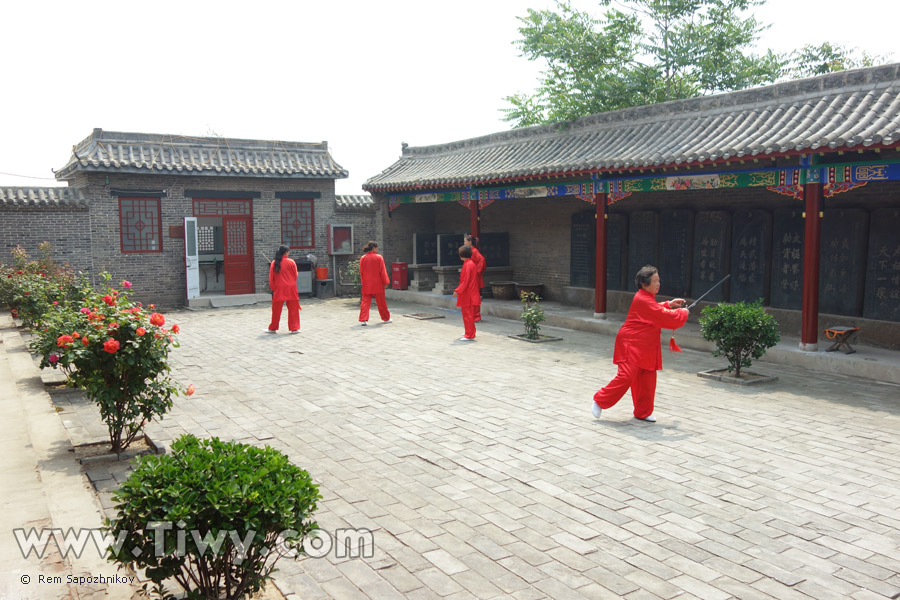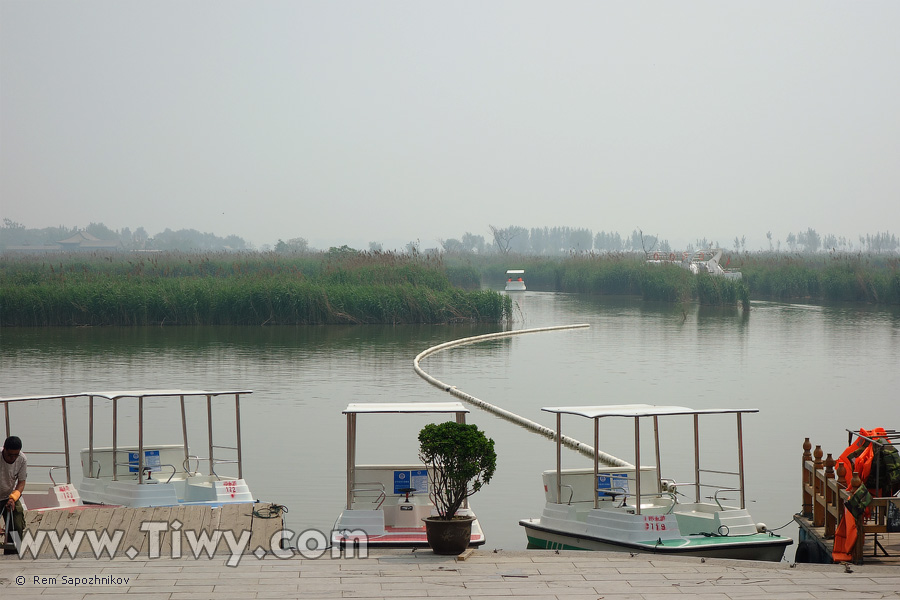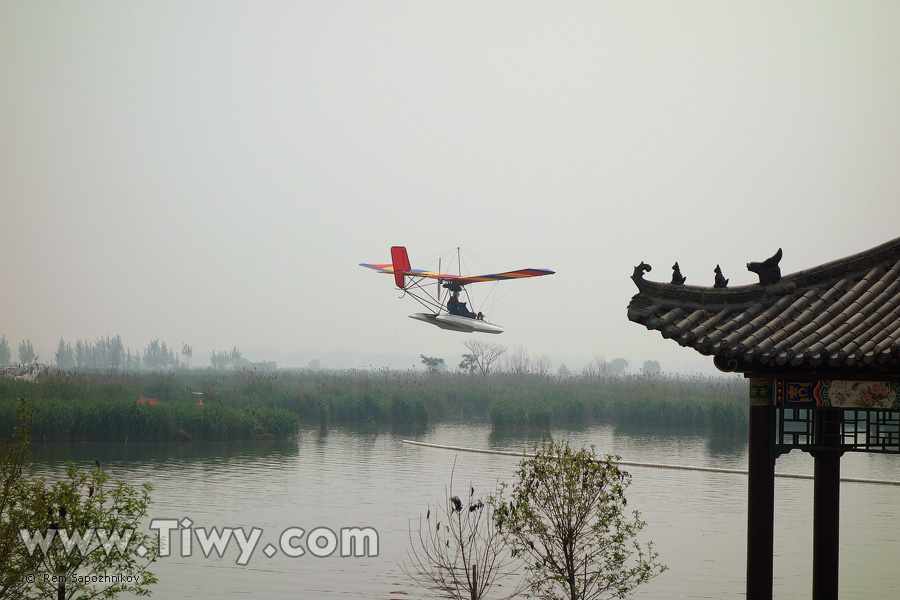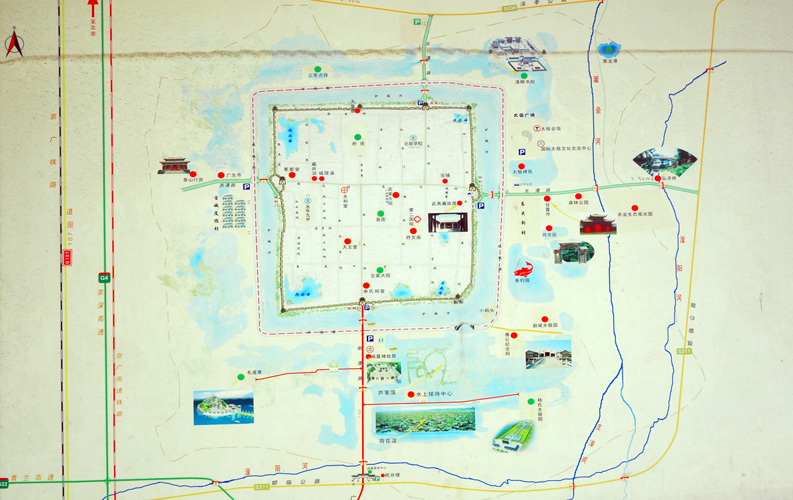Guangfu Ancient Town, part I (广府古城 - Guǎngfǔ gǔchéng)
One day, looking through Google maps, I was lucky to notice an unusual place (see a screenshot below). Of course, I immediately became interested in the square town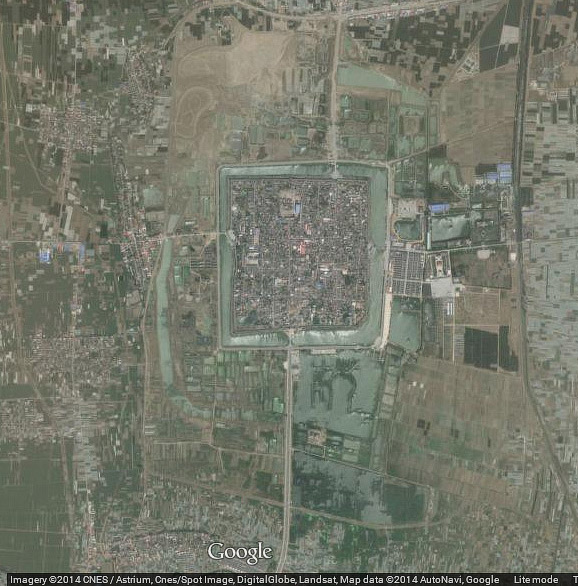
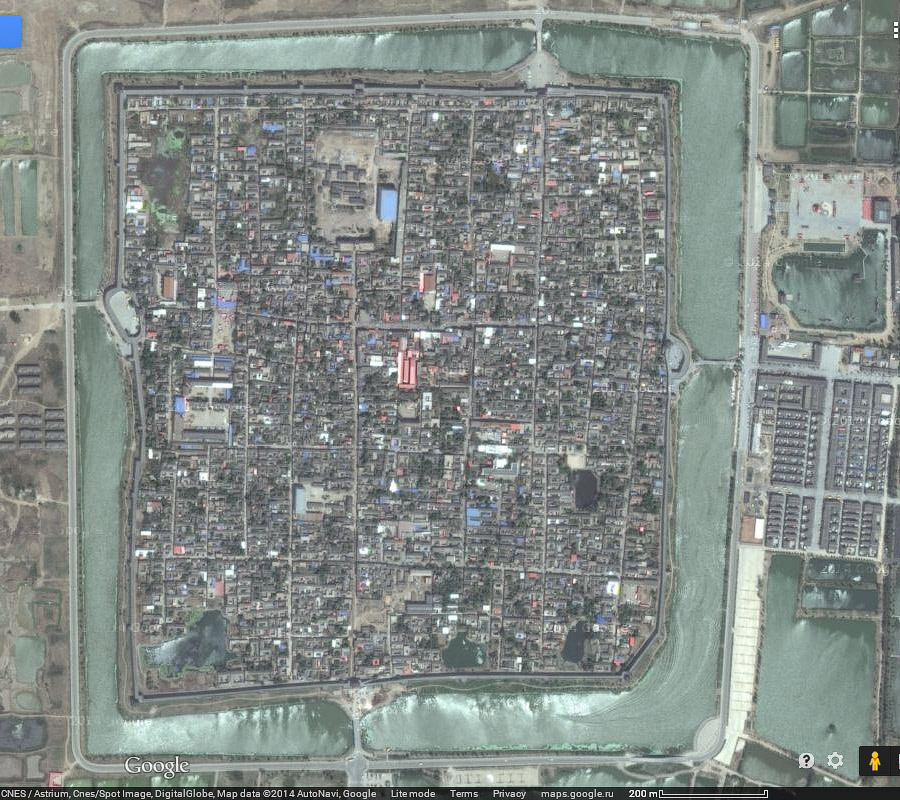
The dating of the brick wall construction is different too. According to some sources, it was built during the Yuan dynasty period (1271 - 1368 AD). According to other sources, it was built later, during the Ming dynasty period (1368 - 1644 AD). It is possible that in 1542 it was not a construction, but a reconstruction of Guangfu town wall, which lasted 13 years. It is known that the old masters added rice broth to the lime mortar. It was believed that such a mixture fixes the bricks better and makes the walls more durable. The same technology was used in the construction of the Great Wall. The creation date of the defensive ditch around the town is not specified anywhere.
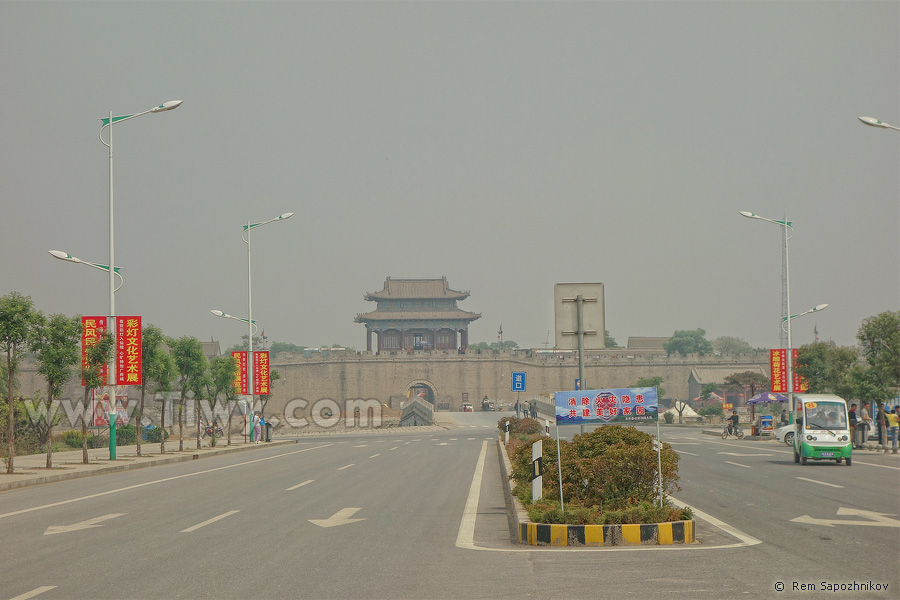
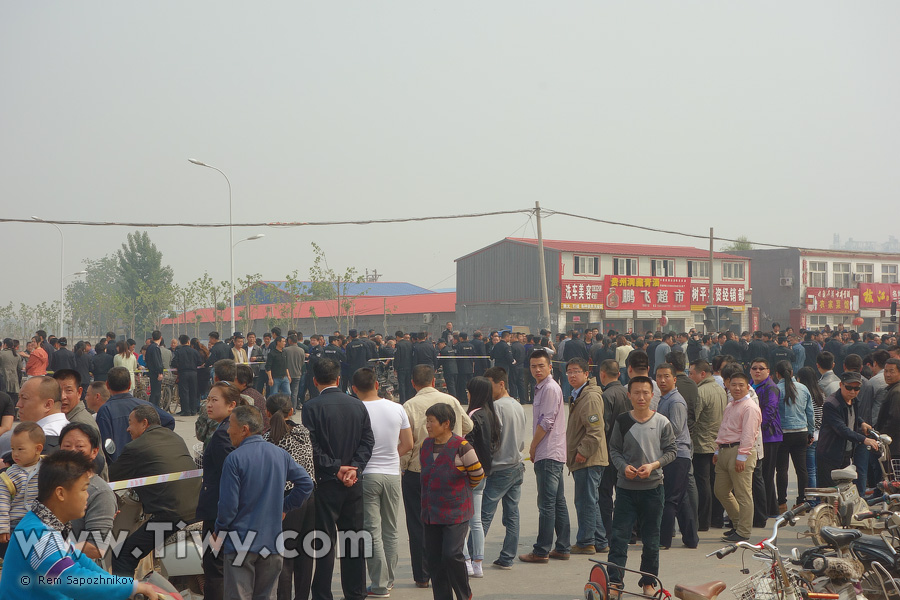
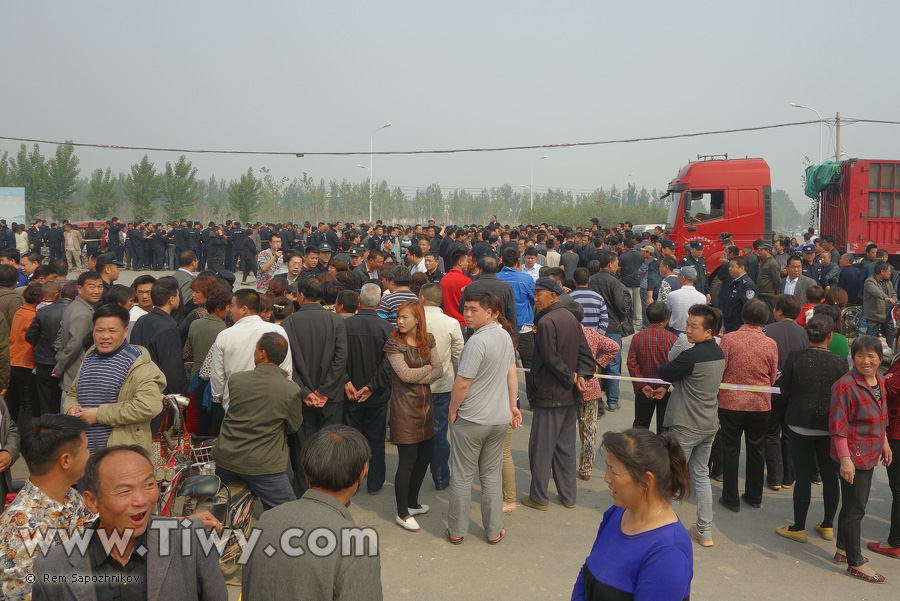
Later, I tried to find some information about what was happening that day. Unfortunately, all the messages of that event were only in Chinese. If I got it right, the local peasants and farmers were displeased with the price for their land property repurchase, which was 3 times lower than the market land value in these districts. The inhabitants suspected that the local bureaucratic corruptionists have defrauded the part of money allocated for the compensation.
Interestingly, I found the materials about this protest action (in Chinese) on RadioFreeAsia and ChinaAid websites, the headquarters of which are located in Washington.
